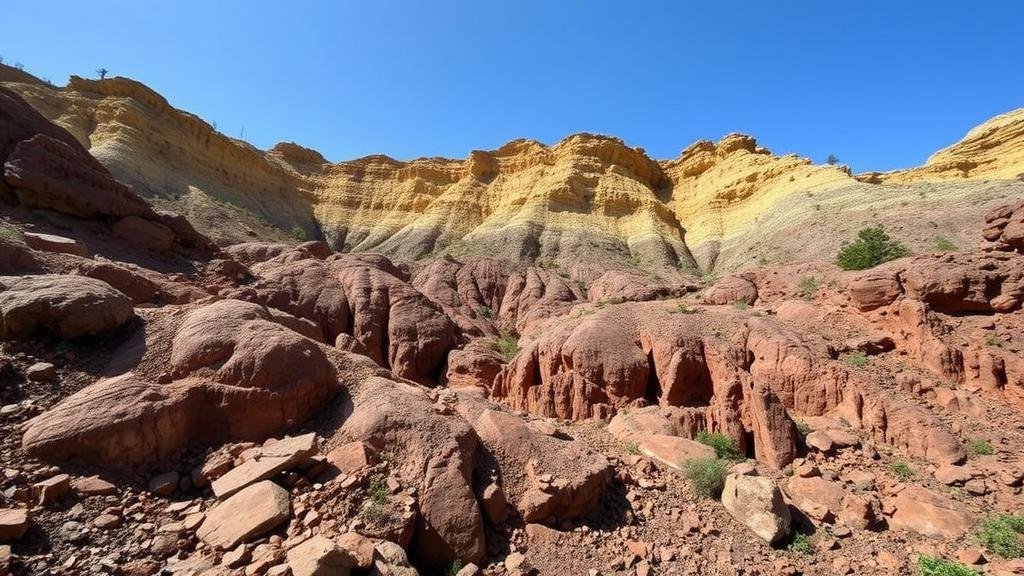Spotting Copper-Rich Rocks in Igneous and Sedimentary Formations
Spotting Copper-Rich Rocks in Igneous and Sedimentary Formations
Copper is a critical metal due to its extensive use in electrical wiring, plumbing, and various alloys. Identifying copper-rich rocks can provide valuable insights for mining and geological studies. This article will explore how to spot copper-rich rocks within both igneous and sedimentary formations, highlighting their characteristics, geological settings, and practical applications.
Understanding Copper Mineralization
Copper is primarily found in several mineral forms, including chalcopyrite (CuFeS2), bornite (Cu5FeS4), and malachite (Cu2CO3(OH)2). Understanding these minerals and their characteristics is critical for identifying copper-rich formations. Chalcopyrite, for instance, is a brass-yellow mineral that often serves as the main copper ore in igneous deposits.
Identifying Copper in Igneous Formations
Igneous rocks form through the cooling and solidification of molten material, and they often contain copper deposits in certain geological environments. The main types of igneous formations that might contain copper include:
- Intrusive Igneous Rocks: These rocks, such as granite and diorite, form from magma that cools slowly underground. Copper deposits are typically found in porphyry copper systems.
- Extrusive Igneous Rocks: Formed from lava that cools quickly on the surface, basalt and rhyolite can also contain copper, especially in volcanic settings.
Geological Setting for Copper-Rich Igneous Rocks
Copper mineralization in igneous rocks typically occurs in specific tectonic settings. For example:
- Subduction Zones: In these areas, oceanic plates sink beneath continental plates, leading to the formation of mineral-rich magmas.
- Mid-Ocean Ridges: Here, tectonic plates diverge, creating an environment rich in hydrothermal systems that can leach copper from surrounding rocks.
For example, the Grasberg Mine in Indonesia is one of the largest copper-gold mines and is located in a porphyry copper environment at a subduction zone.
Identifying Copper in Sedimentary Formations
Sedimentary formations can also contain significant copper deposits, primarily through secondary processes that alter igneous rocks or accumulate copper minerals. Key types include:
- Sandstone-Hosted Deposits: Copper can accumulate in sedimentary rocks such as sandstones through processes like oxidation and leaching.
- Carbonate Rocks: Copper minerals often form in limestone and dolomite as a result of chemical precipitation.
Geological Setting for Copper-Rich Sedimentary Rocks
In sedimentary environments, copper is often associated with reducing conditions where organic matter is present. Important examples include:
- Base Metal Deposits: These can form in marine environments where anoxic conditions lead to copper concentration in sedimentary layers.
- Lake Sediments: Some lakes can become rich in copper due to inflow from surrounding minerals and subsequent precipitation.
The Copperbelt region in Zambia is a prime example where extensive sedimentary copper deposits are found, illustrating the significance of geological context.
Techniques for Spotting Copper-Rich Rocks
Several techniques can be employed to spot copper-rich formations effectively, including:
- Field Observation: Geologists often look for characteristic colors (green and blue from oxidized minerals) and mineral textures.
- Geochemical Analysis: Collecting soil and rock samples for laboratory analysis can provide definitive evidence of copper presence.
- Geophysical Surveys: Techniques like resistivity measurements and magnetic surveys can help identify areas of mineral concentration.
Real-World Applications
The identification of copper-rich rocks plays a vital role in mining exploration and resource management. Efficiently spotting these formations leads to the discovery of potentially lucrative copper deposits, which is crucial for meeting global demand. The economic significance is highlighted by the fact that the global copper market was valued at approximately $221 billion in 2020 and is expected to grow significantly, driven by increased demand for electric vehicles and renewable energy technologies.
Conclusion and Actionable Takeaways
Spotting copper-rich rocks in igneous and sedimentary formations requires a comprehensive understanding of geological processes and the minerals associated with copper. By utilizing field techniques, geochemical analysis, and understanding geological settings, geologists can identify areas rich in copper. As demand for copper continues to rise, honing these skills will be essential for successful exploration in the minerals sector.



